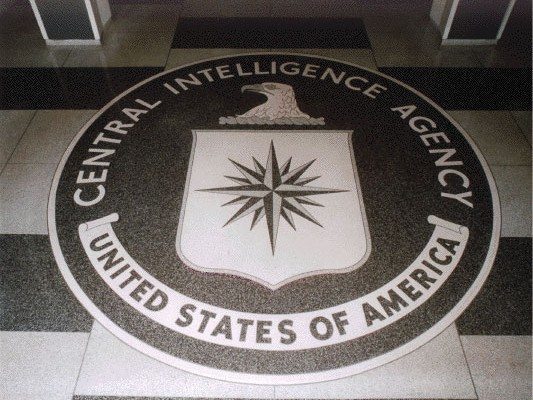 Image courtesy of [Global Panorama via Flickr]
Image courtesy of [Global Panorama via Flickr]
News
ACLU Files Lawsuit Against Architects of CIA Torture Program
After the CIA’s use of torture in interrogations came to light in a controversial Senate report, few people have been held directly responsible for misconduct. The American Civil Liberties Union (ACLU) hopes to change that with a recently filed civil suit against two psychologists who consulted with the CIA to develop and implement the program.
The lawsuit, filed on behalf of two former CIA prisoners and the estate of another who died while in CIA custody, claims that John “Bruce” Jessen and James Mitchell violated international law for their role in the CIA’s use of torture.
The Senate Select Committee on Intelligence’s report on the CIA’s “enhanced interrogation” program reignited the debate about the agency’s use of torture from 2002 to 2009. The so-called “torture report” immediately became controversial, revealing the details of several interrogations and the tactics that were employed by the CIA and its contractors. While the full report, which spans more than 6,000 pages, remains classified, the 512-page executive summary came out last December. Enhanced Interrogation Techniques (EITs) include waterboarding, physical abuse, sleep deprivation, dietary manipulation, nudity, rectal rehydration, mock executions, and isolation in extreme cold and in coffin-shaped boxes for days at a time. Hypothermia is reportedly the cause of Gul Rahman’s death, and according to the ACLU’s complaint:
An autopsy report and internal CIA review found that Mr. Rahman likely died from hypothermia caused ‘in part from being forced to sit on the bare concrete floor without pants,’ with the contributing factors of ‘dehydration, lack of food, and immobility due to ‘short chaining.’
Prior to the Senate report, there was very little available evidence about the CIA’s use of torture in the post-9/11 era. In fact, the ACLU noted that its lawsuit is largely based on the contents of the CIA report. Steven Watt, a lawyer for the ACLU told the Huffington Post that the report is “really why our clients are able to pursue this case.”
According to the complaint, the plaintiffs–Suleiman Abdullah Salim, Mohamed Ahmed Ben Soud, and now-deceased Gul Rahman–were interrogated at CIA black sites using techniques that constitute torture. It further claims that the two psychologists, Jessen and Mitchell, “designed, implemented, and personally administered an experimental torture program for the U.S. Central Intelligence Agency.”
The lawsuit seeks relief for the plaintiffs based on the Alien Tort Statute, which enables non-citizens to file lawsuits for violations of international laws and treaties. The ACLU has three specific claims against Jessen and Mitchell, specifically the use of “torture and other cruel, inhuman, and degrading treatment,” non-consensual human experimentation, and war crimes.
The complaint argues that the defendants’ roles were central to the entire enhanced interrogation program, as they monitored the interrogations, suggested tactics for interrogators, and may have participated themselves. In an interview with Vice, Mitchell admitted to participating in waterboarding a prisoner but has so far refused to give additional details about his involvement. Their company, Mitchell Jessen and Associates, was contracted by the CIA to oversee and conduct interrogations, for which it received about $80 million. The company also employed 11 of the 13 interrogators used by the CIA. The lawsuit was filed in a federal court in Washington state, which is where the company was headquartered.
Prior to their involvement with the CIA, both Mitchell and Jessen worked for the Air Force’s Survival, Evasion, Resistance, and Escape program, which trained soldiers to resist coercive and violent interrogation tactics. Based on their experience training people to resist harsh interrogation, the CIA asked them to advise and monitor interrogations of high-level suspects in the wake of 9/11.
According to the complaint, the psychologists utilized research from the 1960s to develop their recommendations for the CIA, specifically the work of Dr. Martin Seligman who experimented with dogs to develop an understanding of learned helplessness. Seligman found that repeated abuse eventually put dogs in a state where they became completely compliant, which is what Jessen and Mitchell sought to reproduce in CIA interrogations. Because many of the prisoners had been trained to resist interrogation, these methods were used to break them down in order to retrieve information. This conclusion is a point of much contention–the Senate report concluded that the enhanced techniques proved ineffective and even counterproductive, while Mitchell has maintained that his advice saved lives. The CIA concluded that it is impossible to tell whether or not the CIA torture had intelligence benefits. Ultimately, the answer to that question has become more a product of individual ideology than the available evidence.
The ACLU’s claims and its underpinnings in the Senate’s report are certainly shocking. One of the few relatively undisputed parts of the report is the actual tactics that were used. The lawsuit focuses on the long-term psychological consequences of the torture that the victims are currently dealing with.
The exact culpability of Jessen and Mitchell is difficult to determine based on the information available, which will make this lawsuit particularly challenging. It is unlikely that the CIA will release new evidence and it appears that based on the contract that the psychologists have with the agency, they will not be paying their legal fees. According to the Guardian,
A Spokane-based company the two founded, Mitchell and Jessen Associates, would secure $75m from the CIA in contracts, in addition to a further $6.1m from the agency for legal expenses in the event of criminal or civil action stemming from the contract.
In light of the government’s unwillingness to hold those who committed and authorized torture accountable, the ACLU’s attempt to seek justice is laudable. But securing sufficient evidence to receive compensatory damages will be particularly difficult, as the program has been and will continue to be shrouded in secrecy.








Comments